April 25, 2024 | Authors: André Nimtz & Maren Fichtner | Reading time: approx. 15 minutes
Connected work in production:
Does it even exist?
“Jacob is working from home today.” - a phrase that does not and cannot exist in the production environment. While new forms of collaboration have become established in the office environment, especially in times of coronavirus, production remains an on-site job.
However, this does not exclude certain standards of networked working or connected work. Four aspects fit perfectly in your production hall:
![]()
Hybrid
Employees do not switch between the production hall and home office, but digitally between locations. Connected work here means that digital collaboration is possible across locations.
![]()
Collaborative
With the right data basis and the right tools, departments are networked with each other. The worker at the machine enjoys new opportunities for collaboration with other departments.
![]()
Agile
Connected work also means exchanging information regularly and creating more transparency. This enables a more flexible and agile way of working with better planning.
![]()
Independent
The possibilities offered by the digital connection to data and employees allow the connected worker to work with a higher degree of autonomy.
In the production environment, connected work is establishing itself not primarily as a principle of action, but as a person - in the form of the connected worker.
The connected worker at the heart of production
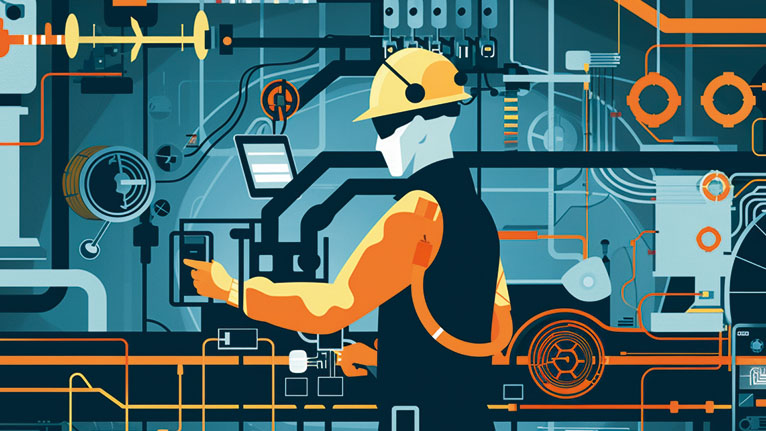
Automation, digitalization, AI: none of this will drive workers away from the heart of production. Instead, the connected worker will become an indispensable link. Technology will enable them to break down function-specific silos and network optimally with their working environment.
Thanks to technologies such as augmented reality or the Industrial Internet of Things, the connected worker integrates seamlessly into digitalized company processes. Smart devices enable time-independent access to all relevant information and open up direct feedback opportunities.
But already established technologies such as the computer at the workplace are also becoming powerful interactive tools for the connected worker in the course of digitalization.
The connected worker and his 5 types of connection
In the digitalized production of the future, the connected worker is perfectly connected in terms of organization, processes and technology.
Five types of connection can be distinguished:
![]()
Connected with other people
The connected worker is connected with colleagues via chat or messenger. Tools such as remote collaboration and AR are used for contact with customers or in-house support.
![]()
Connected with processes
Processes are mapped digitally and transparently. The connected worker receives all information about the process in digital form, for example as digital work instructions.
![]()
Connected with the product
All relevant details of the product to be manufactured are also available digitally. The worker always has direct digital access to data sheets, CAD drawings, etc.
![]()
Connected with the own tasks
Connected work in the production environment promotes the autonomy of the connected worker. Thanks to a variety of tools and digital possibilities, the worker gains a high degree of organizational freedom.
![]()
Connected to information
In digitalized production, the worker has access to all the data released for him. If required, they can obtain an overview of actual statuses or access real-time data.
Challenges on the road to connected work
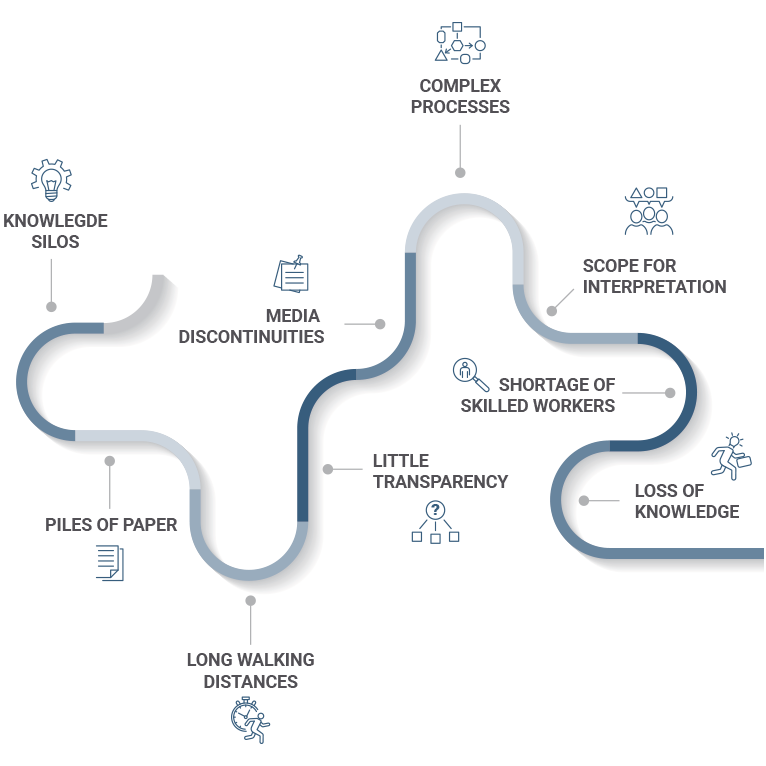
That sounds a bit like a working paradise on earth, but it's not quite so easy for a worker to become a connected worker. The classic hurdles and challenges of digitalization often stand in the way, which you first have to overcome. These include
- knowledge silos / scattered information
- piles of paper / printed documents
- walking distances to obtain information
- problem solving on demand / lack of traceability
- manual documentation / media discontinuities
- scope for interpretation of information
- increasingly complex processes
- shortage of skilled workers
- loss of knowledge with retirement
Connected worker platform: the answer to all connection questions?

What is a connected worker platform?
If connected work is the discipline and the connected worker is the actor, then the connected worker platform is the technological foundation. It is primarily intended to do what ERP, MES and the like do not: it takes the final step towards the worker.
It is important to understand that this is a collaborative platform, not an integration platform like those found in IoT platforms such as ThingWorx, AWS IoT or Cumulocity. Accordingly, a good connected worker platform offers everything the worker needs for connected working.

What is the goal of a connected worker platform?
A connected worker platform fully integrates people into digitalized production and increases their efficiency. It achieves this by providing them with the right information about their work order at the right time and in the right place. At the same time, the connected worker has the opportunity to document their own expertise and thus optimize processes. Continuous improvement processes (CIP) can thus be implemented and promoted.
The worker is continuously networked with colleagues, their tasks, the process, all necessary information and the product to be manufactured. This increases process reliability, work quality and productivity.
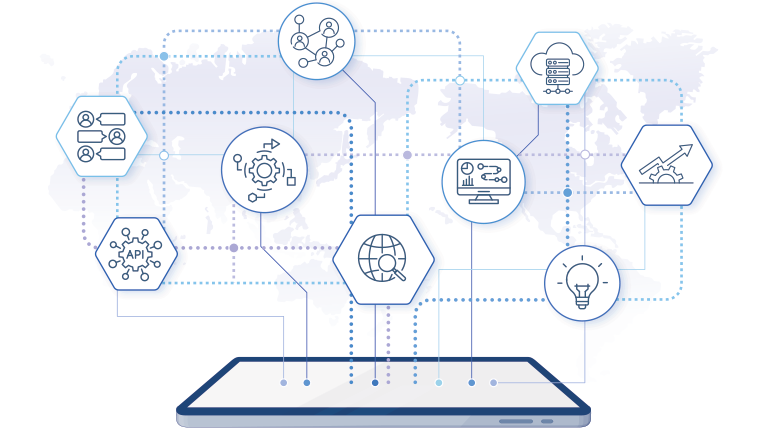
What does a connected worker platform typically consist of?
To put it simply, we can imagine a connected worker platform as a large software suite that combines numerous functions or makes them available through a simple connection.
A good connected worker platform works seamlessly with its OT and communicates with ERP, MES and connected assets. It provides the tools for daily work in the form of digital work instructions and checklists as well as all the associated information. It opens up simple communication channels via chat or feedback function and provides notifications for maintenance or malfunctions.
Management functions can also be part of the repertoire of a connected worker platform. These include, for example, store floor management, knowledge management and document libraries, issue management and training and skills management.
Which use cases does a Connected Worker Platform cover, among others?*
Worker guidance
Areas: assembly, commissioning, maintenance and servicing
Task: Worker guidance through production processes is to a certain extent the core task of the Connected Worker Platform. It provides the necessary work instructions and standard operating procedures (SOPs) for this.
Quality and compliance
Areas: quality assurance, maintenance
Task: If a platform can make data available, guide employees and record feedback, then the same functionality can easily be used for audits, incident management or the implementation of preventive measures. Collected data can be analyzed for reporting and verification purposes.
Training and qualification
Areas: onboarding
Task: During work, the connected worker's process knowledge is saved either automatically or through feedback functions. This knowledge can be used to train new employees or make knowledge available on-demand.
Collaboration
Areas: maintenance, assembly
Task: The communication tools of a connected worker platform enable direct collaboration between workers across departments or locations. With advanced technologies such as AR, even remote services can be implemented.
Continuous improvement processes (CIP)
Areas: general company processes, production-related processes, audits
Task: The connected worker platform creates the basis for incorporating empirical knowledge directly into the process. Timely feedback enables prompt process optimization. This results in a constant transfer of knowledge. The platform also creates transparency regarding the implementation of optimization measures.
What are the benefits of a connected worker platform?
Let's ignore the buzzword “connected worker” for a moment and look at the concrete benefits that such a platform brings. It enables you to meet many of the challenges of digitalization that you have already read about earlier in this article:
Increase efficiency & productivity
- avoidance of errors
- effective support for employees in increasingly complex processes
- increased productivity
- increase in audit security
Utilizing savings
potentials
- shorter response times
- avoiding walking distances
- more flexible resource planning
- elimination of paper costs
Secure and share knowledge
- knowledge transfer between new young talent and experienced knowledge carriers
- sustainable safeguarding of process knowledge
Creating
transparency
- progress monitoring
- decision-making based on real-time data
- new technology (such as AR) offers new insights into information
Making work
more attractive
- increased attractiveness of the workplace / working environment
- improved communication / promotion of cooperation
Key question: worker guidance system or connected worker platform?
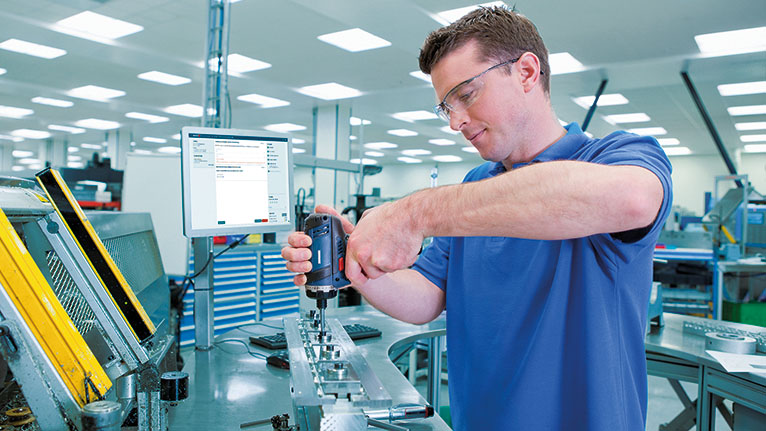
Now that you have taken a closer look at the functions, use cases and benefits of a connected worker platform, is there anything that strikes you? There is another established concept on the market for industrial solutions that is very similar: worker guidance systems. Do you get a connected worker platform when you introduce a worker guidance system? Let's say: It depends.
In principle, a worker guidance system connects people with the process, product and their own tasks in exactly the same way as a connected worker platform. A worker guidance system provides digital work instructions and checklists, makes product and process-relevant information available digitally and enables tasks to be completed independently thanks to targeted guidance through the process.
The crux of the matter, however, is flexibility. Is the worker guidance system flexible enough for a wide variety of scenarios? Does it have open interfaces to connect systems and assets? Does it have communication tools or options for integrating them? If so, then the worker guidance system can certainly be equated with a connected worker platform.
What you should consider when introducing a connected worker platform
Preconditions
For the new solution to be a success in your company, the framework conditions must be right. Internal processes often no longer fit and need to be optimized or adapted to the Connected Worker concept. It is also important that networking and digitalization are exemplified by management. The motto is to educate, explain and instruct.
Another important aspect is training employees in the new tool with the aim of not only providing them with new software, but also creating the right mindset among them. In concrete terms, this means getting your employees excited about new tools and new tasks. Create a willingness to learn new things and develop digital skills.
A hardware investment is often added to the software introduction. Empower your employees with the appropriate end devices to carry out their (new) tasks as connected workers.
Last but not least: be aware of the challenges from the outset. Networking your employees on the store floor can entail implementation and software maintenance costs. Training also costs time and money. And, of course, networking requires the availability of a corresponding network on the store floor. These are all points that must play a significant role when considering your ROI.
Procedure
A connected worker platform is not a panacea and may well be the wrong solution. You should therefore find out in advance whether such a platform will really deliver the desired benefits and work towards your goal in four steps.
Step 1: Inform
It is very important to be clear about your goals. Define them in advance and research possible solutions and providers. Is a connected worker platform still an option? Then continue with ...
Step 2: Discover
Talk to various solution providers and ask them to present their products in detail. Ask very specific questions relating to your goals.
Step 3: Try
Many providers make test environments available. Take advantage of this offer and try out the solutions - always with the final stakeholders, i.e. the employees who are to work with them and can adequately evaluate the functions.
Step 4: Profit
If a solution meets your requirements, then nothing stands in the way of its introduction in your company.
Conclusion
Connected work can also find its way into production - in the form of the connected worker. The tool of choice here is a suitable platform that connects employees with their task, the process and the product.
This platform can certainly be a worker assistance system, provided the system is flexible enough. If it has open interfaces and options for integrating a wide range of systems and assets, then it doesn't have to say “connected worker platform”. The functionality is more important than the label.
Free e-paper: How to find the right worker guidance system
Are you wondering whether and how you can introduce a connected worker platform in your company? Then you should take a look at the various worker guidance systems on the market. We've put together a list of things you should definitely look out for when choosing a suitable system. Download our free e-paper now.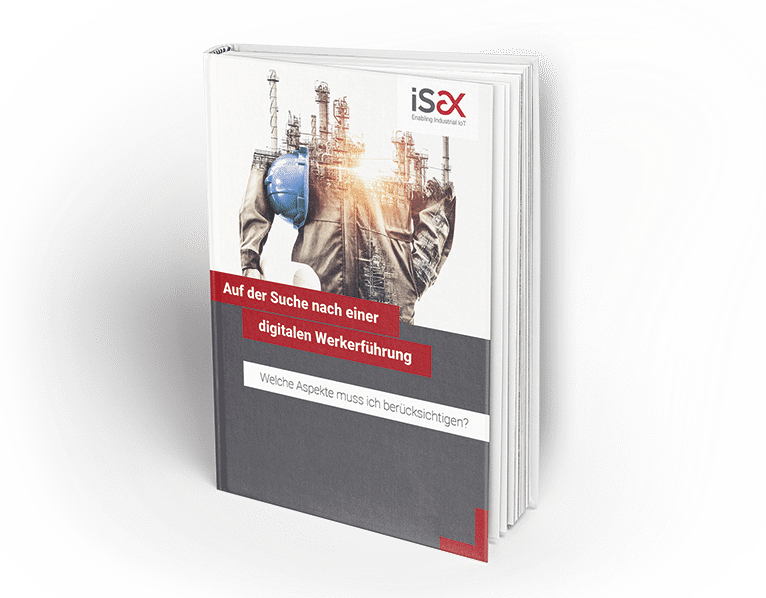
A glance at the contents:
- overview of operating and business models
- important aspects of integration
- essential features for work instructions
- importance of order control
- ...
* according to Gartner
